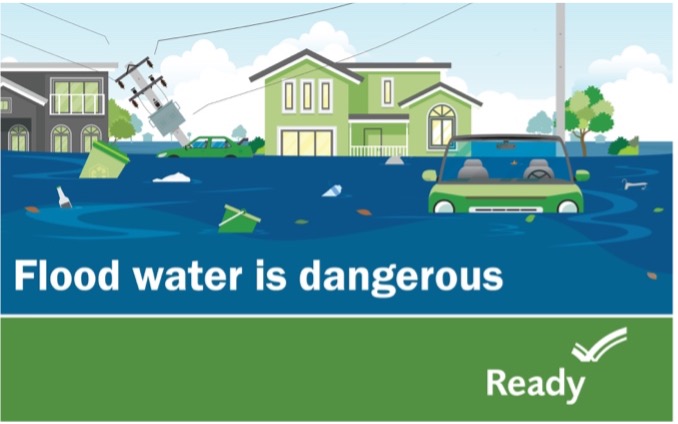Flood
The Future of Flooding
The State’s 2020 Scientific Report on Climate Change highlights the increasing risks of flooding in New Jersey. Annual rainfall totals for the last 10 years in New Jersey have increased by 7.9% over the long-term average and extreme precipitation events have also become more frequent, increasing by 71% over the last 50 years in the Northeastern United States. As the earth warms and additional water vapor moves to the atmosphere, changes in timing and intensity of heavy precipitation events will become even more likely. A recent study by the New York City Panel on Climate Change estimates that annual precipitation in the area could increase between 4% and 11% by 2050.
Words to Know
- Flood Watch: A message that flooding is possible and to listen to local radio or TV news and weather for more information. You may receive an alert on a cell phone.
- Flood Warning: A message that flooding will occur soon, if it hasn't already, and to move to higher ground or evacuate immediately.
- Flash Flood: A flood that can happen within minutes or hours of heavy rainfall, a dam or levee failure, or city drains overflowing
Lets Get Prepared!
The following information will assist you in deciding how to prepare for different stages of a flood event.
- Elevate and anchor utilities including electrical panels, propane tanks, sockets, wiring, appliances, and heating systems.
- Waterproof your basement: Install a water alarm and maintain a working sump pump to protect your basement. Install a battery-operated backup pump in case of power failure.
- Make sure that you clear any debris from gutters and downspouts to avoid an accumulation of water.
- Elevate or move furniture when flooding is predicted or imminent, move furniture and valuables to a safe place, such as an attic or the highest floor of your home.
After a Flood
Document Your Flood Damage
Before removing flood-damaged items from your home, policyholders should be sure to take the following steps:
- Take photos and videos.
- Record serial numbers.
- Keep receipts.
- Retain all material samples.
- Contact repair services.
After taking photos, you should immediately throw away flooded items that pose a health risk, such as perishable food items, clothing, cushions, and pillows.

Mold and Clean Up
National Flood Insurance Program (NFIP) flood insurance policies will not cover damage from mold. Policyholders are strongly encouraged to begin cleanup and documentation immediately after a flood to prevent the growth and spread of mold. Learn more about safe mold clean up tips for after a flood.
In some instances, it’s not possible for a policyholder to get to the property to begin cleaning. In these cases, mold damage may be covered if:
- An authorized official has banned entrance to the area. Officials may restrict entrance because of downed trees, downed power lines, destroyed roadways, or other reasons.
- Floodwaters remain around the home, or in the area, impeding the policyholder’s ability to inspect and maintain the insured property.


